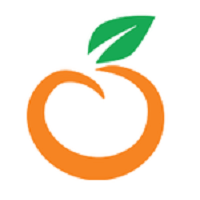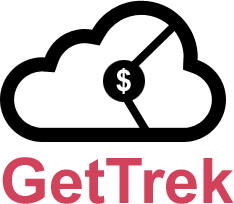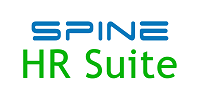Description

GCPAY

Oracle Fusion Cloud HCM
Comprehensive Overview: GCPAY vs Oracle Fusion Cloud HCM
GCPAY
a) Primary Functions and Target Markets
GCPAY is a specialized financial software solution focused on the construction industry. Its primary function is to streamline the payment process for contractors, subcontractors, and suppliers by managing billing, lien waivers, document compliance, and payment approvals. The target market includes general contractors, subcontractors, and construction companies of various sizes looking to optimize their payment processes and reduce administrative overhead.
b) Market Share and User Base
GCPAY operates in a niche market primarily within the construction industry. While it doesn't compete directly with broad-scale ERP or payroll solutions, it holds a relevant position in construction financial management. Its user base consists mostly of construction firms that require specialized payment processing capabilities integrated with project management.
c) Key Differentiating Factors
- Construction Focus: Tailored specifically for the construction industry, providing tools for compliance management, lien waiver exchanges, and contract management.
- Integration Capabilities: Integrates with construction management software such as Procore and other ERP systems used within the industry.
- Ease of Use: Simplifies complex payment processes that are unique to the construction sector.
Oracle Fusion Cloud HCM
a) Primary Functions and Target Markets
Oracle Fusion Cloud HCM (Human Capital Management) is a comprehensive cloud-based HR management suite designed to manage end-to-end employee lifecycle processes. Its primary features include global human resources, talent management, workforce rewards, and workforce management. The target market for Oracle Fusion Cloud HCM includes large enterprises and multinational organizations looking for complex and scalable HR solutions.
b) Market Share and User Base
Oracle is one of the market leaders in the enterprise software segment, including HCM systems. Its user base is extensive, particularly among large and complex organizations needing globalized and customizable HR solutions. The market share for Oracle Fusion Cloud HCM reflects its strong presence among enterprises that require robust and scalable systems.
c) Key Differentiating Factors
- Integration and Scalability: Part of the larger Oracle Cloud suite, offering seamless integration with other Oracle software and scalability for international operations.
- Advanced Analytics and AI: Leverages artificial intelligence and advanced analytics to enhance decision-making and HR processes.
- Comprehensive Suite: Offers a complete suite of HCM solutions from core HR to advanced talent management and workforce planning tools.
Spine Payroll
a) Primary Functions and Target Markets
Spine Payroll is a payroll software solution that automates payroll processing for businesses. Its primary functions include salary calculation, statutory compliance, tax management, and employee self-service features. The target market is small to medium-sized businesses (SMBs) and enterprises seeking to streamline their payroll operations.
b) Market Share and User Base
Spine Payroll primarily serves the Indian market and has a growing user base among SMBs and enterprise-level clients. It might not have a broad international market share but is recognized within its target region for its specific payroll functionalities and compliant solutions.
c) Key Differentiating Factors
- Local Compliance: Strong focus on Indian statutory compliance and labor laws, making it ideal for businesses operating in India.
- Affordability: Cost-effective solution for SMBs compared to more comprehensive global payroll systems.
- Simple HR Integration: Basic HR functionalities that offer integration with HR processes, suitable for companies looking for straightforward payroll management.
Conclusion
- GCPAY is specialized for construction payment processes, notable for its niche market and construction-focused features.
- Oracle Fusion Cloud HCM stands out with comprehensive and scalable HR solutions for large enterprises, emphasizing integration and advanced analytics.
- Spine Payroll appeals to Indian businesses needing a cost-effective and compliant payroll solution with straightforward HR integration.
Each product targets different segments and caters to varied needs in the financial and HR management landscapes.
Contact Info

Year founded :
Not Available
Not Available
Not Available
Not Available
Not Available

Year founded :
Not Available
Not Available
Not Available
Not Available
Not Available
Feature Similarity Breakdown: GCPAY, Oracle Fusion Cloud HCM
To provide a comprehensive feature similarity breakdown for GCPAY, Oracle Fusion Cloud HCM, and Spine Payroll, we can analyze their core features, user interfaces, and unique attributes.
a) Core Features in Common
While each product caters to different aspects of business administration, they share some core features within their respective domains:
- GCPAY
- Primarily focuses on payment applications, lien waivers, and compliance management specific to the construction industry.
- Oracle Fusion Cloud HCM
- Comprehensive human capital management suite that includes HR, talent management, workforce management, and payroll.
- Spine Payroll
- Provides payroll processing, tax computation, and reporting solutions.
Despite these roles, when focusing on payroll and compliance:
- Common Features:
- Payroll Processing: Automation and scheduling of payroll activities.
- Compliance Management: Tools to ensure adherence to local labor laws and regulations.
- Reporting & Analytics: Basic analytics and customizable reporting features for business insights.
- User Permissions: Role-based access control for secure data management.
b) User Interface Comparison
Though the specific interface details can vary based on updates and custom implementations, the general approach can be summarized as follows:
-
GCPAY:
- UI is generally designed for simplicity to suit construction industry professionals, featuring clear navigation and document management.
- Focuses heavily on payment processes with dashboards highlighting key metrics related to projects and contractors.
-
Oracle Fusion Cloud HCM:
- Modern, sleek UI with a lot of customizable options.
- Provides a unified experience across different devices, with a focus on self-service capabilities for employees and managers.
-
Spine Payroll:
- Tends to have a more utilitarian and straightforward design focusing on functionality over aesthetics.
- Offers a clean and functional dashboard aimed at payroll administrators for quick access to pertinent data.
c) Unique Features
Each software product has unique features that set it apart within its operational niche:
-
GCPAY:
- Integration with Construction Management Tools: Offers integrated solutions specifically aimed at subcontractor payment and waiver exchanges.
- Legal Document Management: Focus on automating lien waivers and compliance documentation specific to construction projects.
-
Oracle Fusion Cloud HCM:
- Global HR Management: Extensive global features like multi-language support and global legislative compliance.
- Advanced Talent Management: Includes recruiting, learning, and performance management modules integrated with AI.
- Comprehensive Suite Integration: Can be part of a larger Oracle ecosystem, utilizing ERP and CX for a holistic business approach.
-
Spine Payroll:
- Customization Options: Customizable payroll rules and formulae to cater to different types of organizations and industries.
- Localized Support: Strong focus on compliance with Indian payroll legislation and local tax requirements.
- Scalability: Flexible structure aimed at small to medium enterprises for scaling as business grows.
Each of these software solutions provides a set of features targeting specific business needs, whether it's managing construction payment workflows, comprehensive HR scenarios, or efficient payroll processing. Ultimately, the choice will depend on the particular requirements of an organization and the industry they operate within.
Features

Not Available

Not Available
Best Fit Use Cases: GCPAY, Oracle Fusion Cloud HCM
When evaluating software solutions like GCPAY, Oracle Fusion Cloud HCM, and Spine Payroll, it's crucial to understand the specific needs of a business or project before deciding on a platform. Each of these solutions caters to different business functions and can be optimal for certain types of businesses or projects. Here's a breakdown of the best fit use cases for each platform:
a) GCPAY
Use Cases:
- Construction Industry: GCPAY is highly specialized for the construction industry. It's designed to facilitate the billing process between general contractors and subcontractors, making it ideal for construction projects that require complex billing management.
- Projects with Heavy Compliance Needs: Businesses that need to manage lien waivers, compliance documentation, and need insight into project payment status would benefit from GCPAY.
- Large General Contractors: Companies that manage numerous subcontractors and need streamlined billing processes to ensure timely payments and documentation accuracy will find GCPAY very useful.
Industry Vertical and Company Size: GCPAY is specifically tailored for the construction industry, particularly for mid to large-sized construction firms dealing with numerous subcontractors and requiring detailed compliance tracking and payment management.
b) Oracle Fusion Cloud HCM
Use Cases:
- Large Enterprises with Complex HCM Needs: Oracle Fusion Cloud HCM is ideal for large organizations with complex human capital management needs, including global operations.
- Companies Seeking Comprehensive HCM Solutions: Enterprises that need a full suite of HCM functionalities, including HR, talent management, workforce management, and analytics, would prefer Oracle Fusion HCM.
- Organizations Focused on Digital Transformation: Businesses looking to deploy cloud-based solutions to drive digital transformation in human resources management find Oracle Fusion HCM advantageous.
Industry Vertical and Company Size: This solution is well-suited for large to enterprise-sized organizations across various industries including finance, technology, healthcare, and more that require robust, scalable, and integrated HR solutions.
c) Spine Payroll
Use Cases:
- Small to Mid-Sized Businesses: Spine Payroll is ideal for small to medium-sized businesses that need an efficient, cost-effective payroll solution.
- Local or Regional Companies: Companies operating in specific countries or regions where compliance and tax regulations are localized can leverage the tailored functionalities of Spine Payroll.
- Businesses with Basic to Moderate Payroll Needs: Organizations that do not need a complex or highly customizable payroll system might find Spine Payroll sufficient for their operations.
Industry Vertical and Company Size: Spine Payroll suits small to mid-sized businesses across various industries, offering agility, ease of use, and compliance with local payroll regulations. It is a good choice for companies looking for straightforward payroll management without the complexities needed by larger corporations.
Summary
- GCPAY is specialized for the construction industry, serving large contractors well.
- Oracle Fusion Cloud HCM is a comprehensive HCM solution for large enterprises across diverse industries looking for integrated HR management capabilities.
- Spine Payroll serves small to mid-sized businesses needing efficient and localized payroll processing without the complexities of larger-scale solutions.
Each product is crafted to meet the unique requirements of different types of businesses, acting as a best-fit solution in their respective domains.
Pricing

Pricing Not Available

Pricing Not Available
Metrics History
Metrics History
Comparing undefined across companies
Conclusion & Final Verdict: GCPAY vs Oracle Fusion Cloud HCM
When evaluating GCPAY, Oracle Fusion Cloud HCM, and Spine Payroll, it's important to consider factors such as cost, functionality, ease of use, integration capabilities, and customer support to determine which product offers the best overall value.
Conclusion and Final Verdict:
Best Overall Value:
- Oracle Fusion Cloud HCM offers the best overall value for organizations seeking a comprehensive and integrated human capital management solution. It provides extensive features that cover the entire employee lifecycle, robust data analytics, and seamless integration with other Oracle products and third-party applications, making it suitable for large to mid-sized businesses with complex needs.
Pros and Cons of Each Product:
-
GCPAY:
- Pros:
- Specialized in managing construction payment applications, making it ideal for construction industry needs.
- Streamlines the billing process with automated workflows and compliance checks.
- Highly intuitive interface and dedicated customer support for industry-specific queries.
- Cons:
- Limited to payment application processes; lacks broader HR functionalities.
- May not be suitable for non-construction businesses or those needing comprehensive HR and payroll solutions.
- Pros:
-
Oracle Fusion Cloud HCM:
- Pros:
- Comprehensive suite covering HR, talent management, workforce management, and payroll functions.
- Strong analytics and reporting capabilities with advanced AI-driven insights.
- High scalability and excellent integration capabilities, suitable for large enterprises.
- Cons:
- Can be expensive for smaller companies or those with limited budgets.
- Implementation and customization can be complex, requiring significant time and expertise.
- Pros:
-
Spine Payroll:
- Pros:
- Cost-effective payroll solution with fundamental HR functionalities, ideal for small to medium-sized enterprises.
- Easy to deploy with a user-friendly interface and basic reporting tools.
- Provides essential compliance updates and statutory reports specific to various regions.
- Cons:
- Limited in scope compared to more comprehensive HCM solutions like Oracle.
- Lacks advanced features like predictive analytics and extensive talent management tools.
- Pros:
Recommendations for Users:
-
For Construction Industry:
- GCPAY is the go-to option if you are in the construction sector and primarily need efficient management of payment applications. Its specialization provides unmatched value in this niche.
-
For Large Enterprises or Companies Seeking Comprehensive HR Solutions:
- Oracle Fusion Cloud HCM is recommended for organizations requiring an all-encompassing HCM system, with sophisticated analytics and integration capabilities. Despite its higher cost, the extensive functionalities can provide significant value for larger organizations.
-
For Small to Medium-Sized Enterprises Focused on Payroll:
- Spine Payroll offers a cost-effective solution for companies with primary needs in payroll and basic HR functions. Its straightforward implementation and affordability make it appealing for businesses with limited resources or those not requiring extensive HCM tools.
Ultimately, the best choice depends on the specific needs of the company, its industry, size, budget, and HR complexities. Careful consideration of these factors will help users select the product that best aligns with their organizational goals and operations.
Add to compare
Add similar companies




